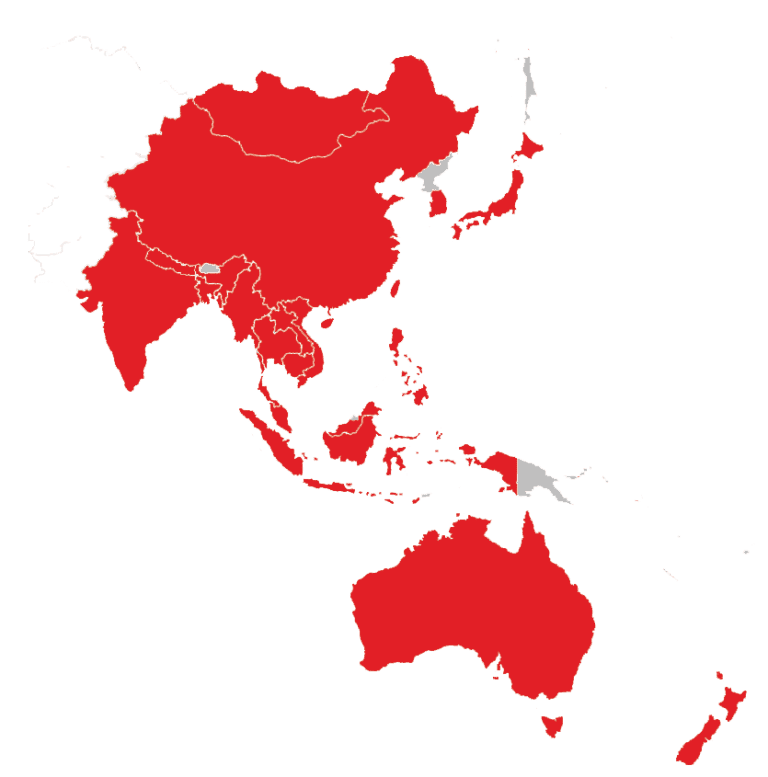An Era of Opportunities for SMEs
As of 2023, more than 300 Free Trade Agreements (FTAs) are active globally, with Asia-Pacific leading the charge. This region alone accounts for around 150 FTAs, illustrating the emphasis on economic integration. For small and medium-sized enterprises (SMEs)—which make up over 95% of all businesses and employ more than 50% of the workforce in many Asian countries—FTAs have become game-changers.
Whether it’s gaining new market access, reducing costs, or streamlining supply chains, FTAs are helping SMEs overcome trade barriers and compete on a global scale. Let’s explore the tangible benefits and real-world examples of how these agreements are shaping the future of businesses in Asia-Pacific.
Interactive Tool: Find the Right FTA for Your Business
Are you curious about which FTAs could benefit your business? Use the WTO Regional Trade Agreements Database to search agreements relevant to your industry and country.
1. Market Access and Expansion
FTAs provide SMEs with enhanced access to foreign markets by lowering tariffs and simplifying customs procedures. For example, the Regional Comprehensive Economic Partnership (RCEP), which spans 15 Asia-Pacific nations, is expected to boost intra-Asian trade by $42 billion annually by 2025.
Success Story: Vietnamese textile giant Vinatex used the CPTPP (Comprehensive and Progressive Agreement for Trans-Pacific Partnership) to expand exports to Canada and Mexico, previously challenging due to high tariffs. Reduced trade barriers allowed them to achieve a 25% increase in exports and cement their position as the second-largest textile exporter globally.
Checklist for Market Expansion:
- Evaluate your export potential.
- Understand the rules of origin in your target market.
- Harmonize product standards to meet FTA requirements.
2. Cost Reduction and Competitive Pricing
One of the most attractive features of FTAs is tariff elimination. By reducing or eliminating import taxes, SMEs can lower production costs and price their goods more competitively.
Case Study: Malaysian electronics manufacturer Globetronics utilized AFTA (ASEAN Free Trade Agreement) to access lower-cost raw materials. Streamlined customs procedures further reduced overheads, enabling them to price products competitively and expand their regional market share.
Expert Insight: “The modernization of finance operations, including AI and machine learning, will amplify the benefits of FTAs by optimizing decision-making,” says Md. Omar Faruq, CFO, BSRM.
3. Supply Chain Integration
Inefficient supply chains can break even the largest companies. FTAs promote cross-border supply chains by reducing costs for raw materials and enabling SMEs to collaborate with partners across the region.
Example: South Korean automotive parts manufacturer Hyundai Mobis leveraged the Korea-ASEAN FTA to establish an efficient supply chain across Southeast Asia, cutting production costs and improving delivery timelines. Similarly, Vietnam’s textile sector benefited from RCEP by importing advanced machinery from Japan, enhancing production quality.
Expert Insight: “Success in the APAC supply chain demands collaboration, innovation, and a steadfast commitment to sustainability,” says Matthew Monaghan, Head of DSJ Global, APAC.
Interactive Quiz: Is Your Business Ready to Leverage FTAs?
Take this short quiz to evaluate your SME’s readiness to capitalize on FTAs. From market research to supply chain optimization, see how you measure up!
4. Realizing the Full Potential of FTAs
While FTAs open doors, SMEs must actively engage to unlock their full benefits. Policymakers, industry associations, and SMEs must work hand-in-hand to ensure trade agreements deliver widespread economic growth.
Tools for SMEs:
- ASEAN SME Academy (Visit here) offers training modules to help SMEs navigate trade agreements.
- FTA Tariff Tool (USITC) provides detailed tariff schedules and trade insights.
Get started by consulting your country’s trade department or attending workshops and seminars. With the right tools and strategies, FTAs can propel your business to new heights.
Infographic: The Economic Impact of RCEP
- $42 billion: Projected annual trade increase by 2025.
- 30% of global GDP: Represented by RCEP nations.
- 15 nations: Collaborating under one of the world’s largest FTAs.
For further details, clarification, contributions or any concerns regarding this article, please feel free to reach out to us at editorial@tax.news. We value your feedback and are committed to providing accurate and timely information. Please note that all inquiries will be handled in accordance with our privacy policy.



